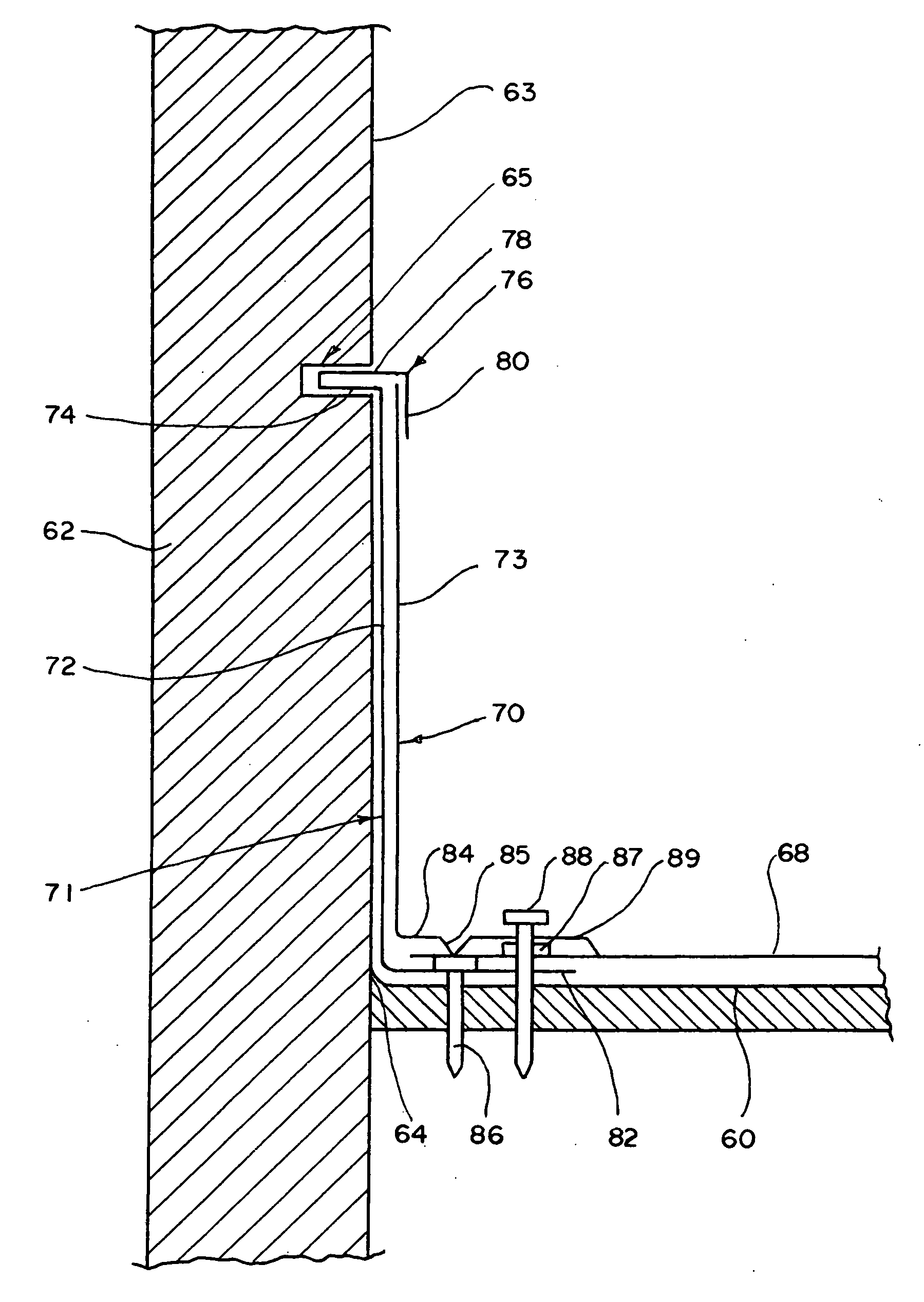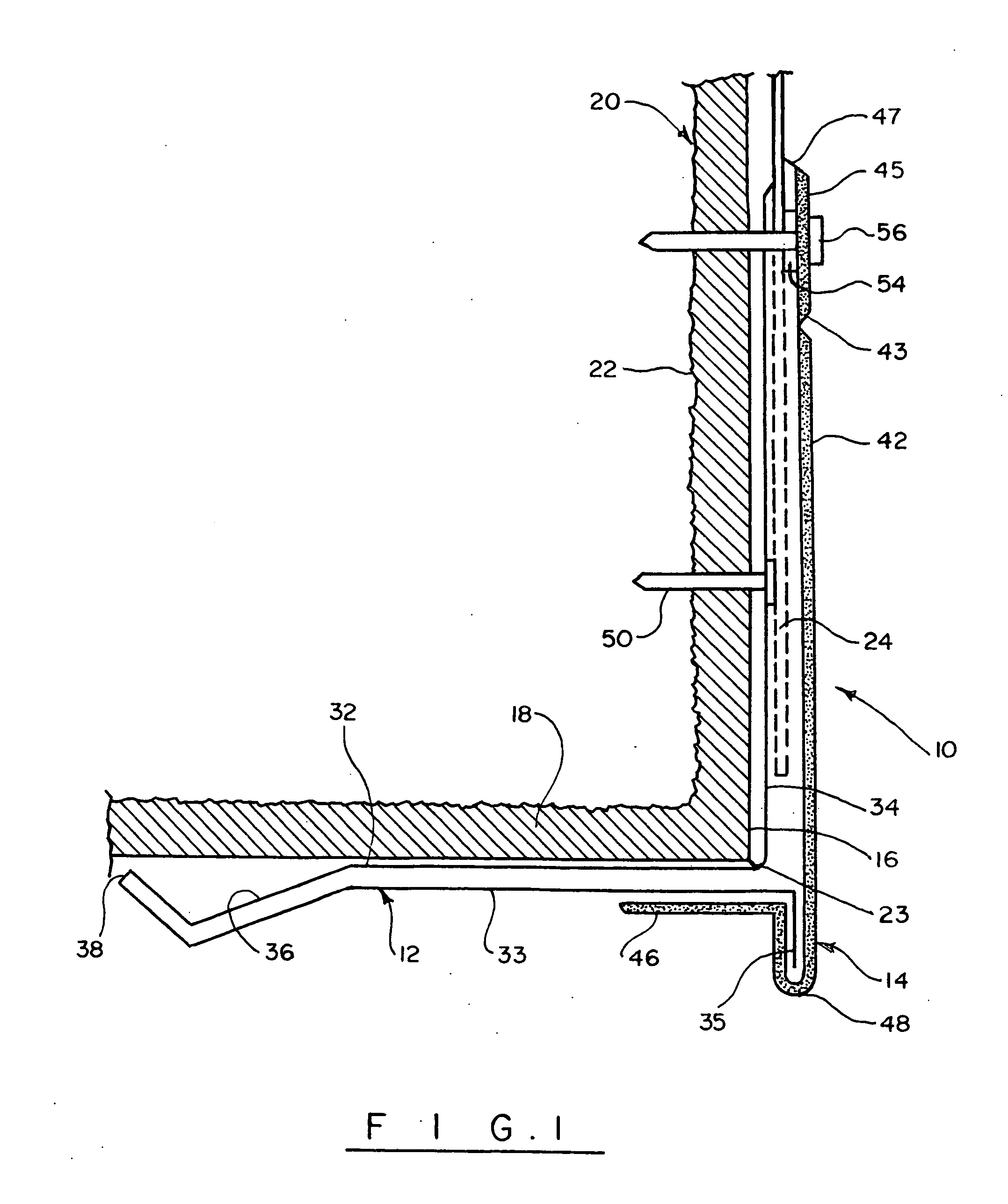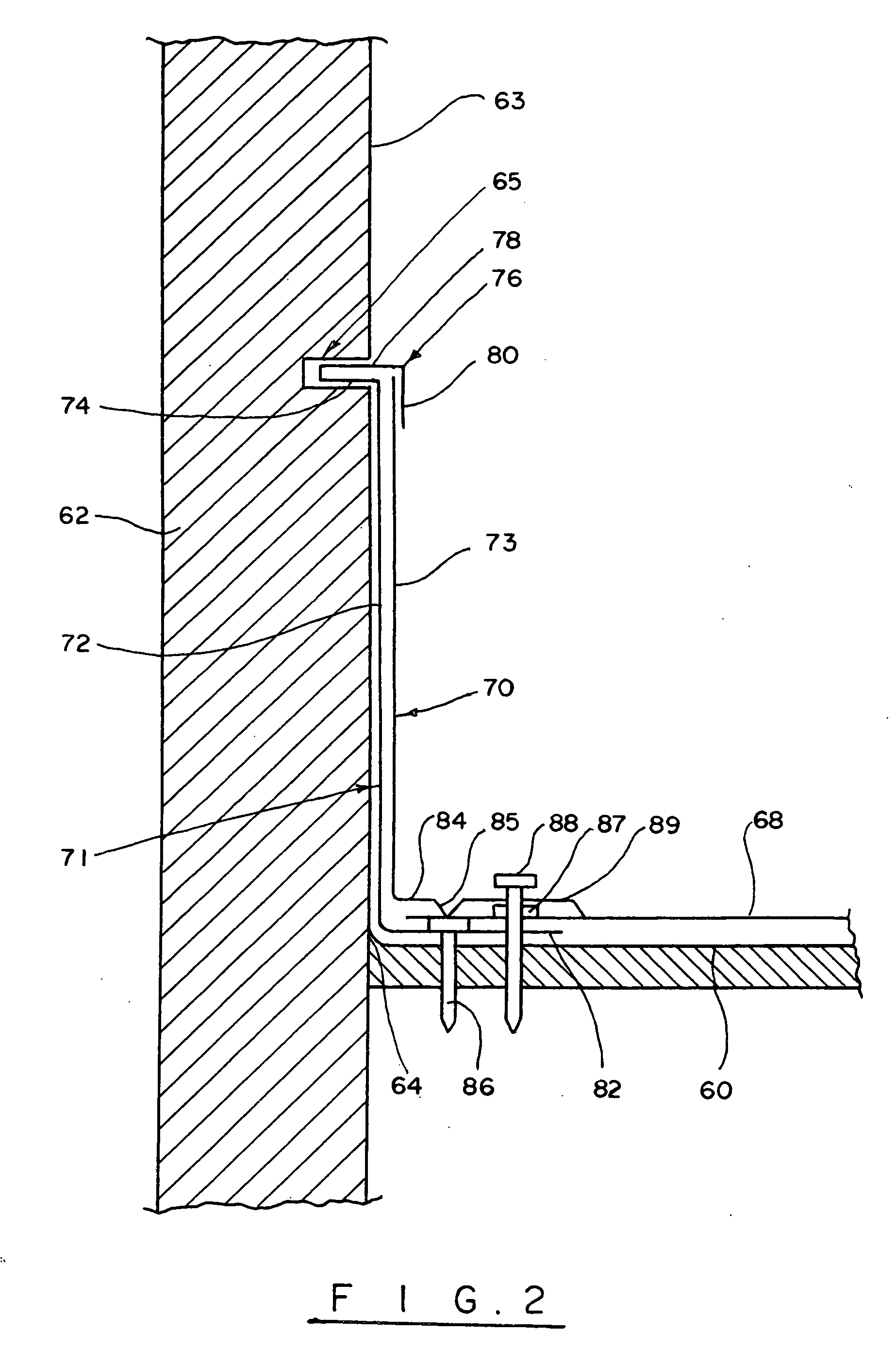Roof flashing
a technology for roofs and flashings, applied in the field of roof flashings, can solve the problems of too much angle for the roof membrane to handle, asphalt membranes still have a tendency to crack and split at the 45-degree angle, absorb water and decompose, etc., and achieve the effect of preventing moisture from destroying
- Summary
- Abstract
- Description
- Claims
- Application Information
AI Technical Summary
Benefits of technology
Problems solved by technology
Method used
Image
Examples
first embodiment
[0015]Turning now to the drawings in more detail, numeral 10 designates the edge flashing assembly according to the invention. The flashing assembly 10 comprises a first flashing member 12 and a second flashing member, or cap 14 adapted for installation at the top 16 of a vertical wall 18. The system 10 is secured to a building 20 having a number of side walls 18 and a roof substructure 22. The system 10 is designed to be secured to the building 20 at the intersection or joining of the walls 18 and the roof 22 in order to provide a more water- and air-tight attachment of a roofing material or membrane 24 along the peripheral edge of the building structure 20.
[0016]The first member 12 comprises an inner vertical part 32 and an outer vertical part 33, a locking flange 34 extending perpendicularly to the top of the inner vertical part 32, and a sealing flange 35, which extends perpendicularly to the outer vertical part 33 in a direction opposite to the locking flange 34. The lower ends...
second embodiment
[0023]Turning now to this invention, reference will be made to FIG. 2, which illustrates a flashing assembly particularly adapted for use with parapet walls. As can be seen in the drawing, the roof substructure 60 joins a parapet wall 62 along a line 64. The roof substructure 60 can be made of plywood or other suitable material. A roofing membrane or roofing material 68 covers the roof substructure 60.
[0024]The parapet wall 62 usually extends at a right angle to the roof substructure 60. As discussed above, the conventional technique would be to place a cant strip along the line 64. However, a strong wind can rip off the roof, breaking the cant strip. The plywood roof substructure 60 then becomes exposed to the environment. The present invention contemplates reinforcement of the weak point—the 90-degree connection between the roof and the parapet wall. According to the present invention, a flashing assembly 70 is placed along the line 64 extending up the parapet wall surface 63 and ...
PUM
 Login to View More
Login to View More Abstract
Description
Claims
Application Information
 Login to View More
Login to View More - R&D
- Intellectual Property
- Life Sciences
- Materials
- Tech Scout
- Unparalleled Data Quality
- Higher Quality Content
- 60% Fewer Hallucinations
Browse by: Latest US Patents, China's latest patents, Technical Efficacy Thesaurus, Application Domain, Technology Topic, Popular Technical Reports.
© 2025 PatSnap. All rights reserved.Legal|Privacy policy|Modern Slavery Act Transparency Statement|Sitemap|About US| Contact US: help@patsnap.com



